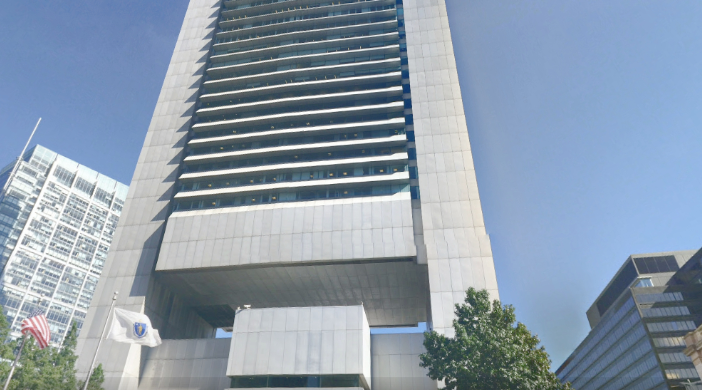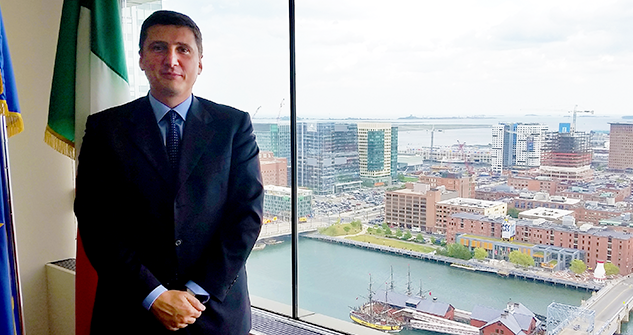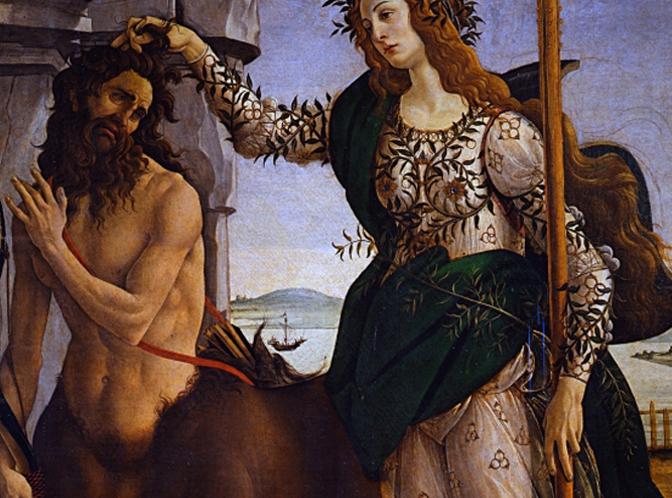The Italian Communities of America’s College Capital
One of the hallmarks of this Consulate General’s constituency is its academic zeal and thriving science and research communities. Here you’ll find not only the best-known institutions of higher learning in the world like Harvard and MIT, but public universities like the University of Massachusetts. There are also many leading innovative research companies in the fields of medicine, biotechnology and life science.
Does this cultural and scientific environment attract many Italians?
Certainly. In fact, our large and qualified community of Italian researchers keeps growing. Upon graduation, many young people come to Boston to specialize. And they often stay here and go on to brilliant careers. We also have many Italian professors. Over 80 Italian professors— full professors for the most part—have been here for at least 5 years. This major influx of Italian intelligence led us to create DBiT, a digital platform at the core of which is a list of roughly 150 students, researchers and scholars in the area. What we’ve begun to offer them is an opportunity to network, to create a community.
Tell us more about this initiative.
DBiT (italyinboston.org/dbit) is the new Internet portal of the Boston Consulate General of Italy. The digital platform performs two functions. First, there’s a website where we plan to promote major Italian-related events in New England, a kind of gateway to the best Italy has to offer in the area, where we’re constantly aggregating and updating a list of concerts, seminars, conferences, exhibits and other events.
But the heart of the platform is a database that generates new networking opportunities for students, researchers, professors and Italian start-uppers in New England who can sign up and make contacts. The most important feature of the platform is that it is open: once you’ve registered you can immediately enter into contact with other members. It’s a kind of Boston “LinkedIn” for Italians. In the future, we might expand and create a notice board for employment opportunities, a tool for Italian and American companies looking for particular professional types.
How did you develop the project?
Thanks to an internship program with the University of Messina, specifically its technical engineering program. We host two interns on a rotating basis. The kids are amazing and we’ve developed other projects with them. All in all it’s a very positive relationship. In our small way, even we at the Consulate are in the business of innovation.
These scientific community initiatives aren’t limited to the digital platform...
Of course not. The platform is no more than the natural digital evolution of our other initiative, the “Aperitivo Scientifico” (Cocktails for Scientists), which offers the opportunity for the same public to meet one another in the flesh, rather than virtually, and keep a sense of Italianness alive. The event has been a hit with the public. On average we attract 70-90 people. We organize seminars, company meetings and presentations of innovative projects. A few months ago, for example, we had Federico Musto, the CEO of Arduino. For another Aperitivo we hosted Stefano Domenicali, the CEO of Lamborghini. The event had a great turnout.
The meetings always include refreshments— the aperitivo—that give people an important chance to meet and network, since the community is so large that many people don’t know one another. Yet there are many self-run groups: the Bocconi Alumni Association, the Harvard Italian Society, the MIT Club of Italy, the New England Italian Students Association, PIB (Professionisti Italiani a Boston) and others. It’s all about creating occasions for them to meet, and that’s what we’re trying to do.
Apart from the sciences and academe, where else is Italy’s presence felt? There’s a large Italian-American community in Boston and New England, for example...
Indeed. There’s a major presence of people descended from Italian immigrants here, who represent an enormous asset to our country. This city has a vibrant Italian neighborhood in the North End and several associations for the Italian-American community. The Consulate organizes or sponsors many events either geared toward that public or that pay homage to our cultural patrimony. We work especially closely with the Dante Alighieri Society, which is very active. There are events of all kinds: musical, artistic, eno-gastronomic, cinematographic. To give you just one example, we co-sponsored a screening of Boston’s North End: An Italian-American Story, a documentary produced by the North End Historical Society, with Boston University’s Initiative on Cities.
Is it hard to bridge the gap between these two faces of Italian immigration?
Perhaps no harder than it is to bridge the gap between different generations in Italy. The fact is the “old” immigration tends to conserve its identity in time. Their memory of Italy no longer cor-responds to the contemporary reality of a country that their ancestors left over 100 years ago. Furthermore, the representatives of this social group suffered, or at least hold onto a memory of having faced prejudice and discrimination in mainstream American society.
Thanks in part to the sacrifices and successes of that Italian-American community, young people from Italy who come here today don’t have those kinds of experiences. They find a completely different and very positive perception of Italy, and they tend to integrate into the social, cultural and professional fabric of America quickly. That’s a good thing, naturally, because it facilitates their professional, entrepreneurial and academic careers. However, at the same time, rapid assimilation puts them at risk of losing their identity. That’s why it’s important to bridge the two.
On the other hand, the efforts often succeed. After the earthquake in central Italy, for example, young Italian students and representatives of traditional Italian-American organizations combined forces to fundraise for the victims. It was a very effective collaboration and helped these two apparently distant worlds get to know one another.
In Boston there’s also a strong attraction to Italy on the part of the wider American public, the so-called Italophiles...
That’s why our program of events is so diverse. Just think of the three wonderful shows on exhibit through the end of July: Botticelli at the Museum of Fine Arts, Carlo Dolci and 17th-century Florentine painting at the Davis Museum of Wellesley College, and the archaeology exhibit at the Smith College Museum of Art where unique findings from two Roman villas in Oplontis, an ancient city near Pompeii, are on display. At the end of July the Amerigo Vespucci naval school will dock here. And then there’s the great Eataly Boston food market, which opened a few months ago and has tangibly demonstrated the allure of all facets of Italy. They are very active, and we’ve collaborated with them on several events, especially those geared toward promoting the study of Italian in American schools.
Any plans for the future?
At least three. First and foremost, there are our initiatives to promote the Italian language, traditionally held in October. This year we’ll once again organize Italian Day in high schools where Italian is taught. Last Italian Day, we presented a special abridged version of La Traviata with the help of a soprano and tenor who came from Italy; with Eataly we led classroom lessons on the Mediterranean diet; showed a few Ferrari and Maserati models; and, thanks to Arduino, we organized lessons in electronics in Italian using a special kit made specifically for students of Italian. Few of them were aware that Arduino is an Italian company. These innovative ways of promoting the language extended beyond traditional teaching methods and focused on getting students emotionally involved in the material.
In November there’ll be the second Week of Italian Cuisine in the World. This is another case where we’d like to expand upon last year’s positive experience with the seminar “Artificial Intelligence: Mediterranean Diet Under Analysis” at the headquarters of IBM Watson Health in Cambridge. The benefits of the Mediterranean diet will be brought to light with recent scientific analysis conducted by the artificial intelligence of Watson.
Last but not least, there’s a very important initiative for next fall, which we’re working on with the Italian Institute for Culture of New York: a reading of the first of Italo Calvino’s American lectures, which the Italian writer had prepared for the Norton Lectures at Harvard. Calvino never gave the lectures because he died the year before. The first and most famous lecture is on lightness, and we hope it will be read at Harvard.








































Comments
Bravi, continuate a menzionare Federico Musto come vanto per l'I